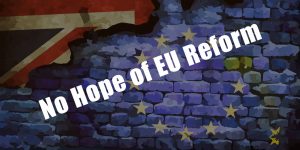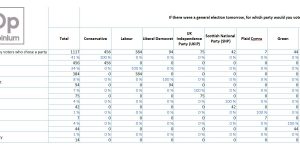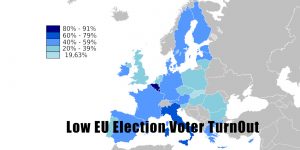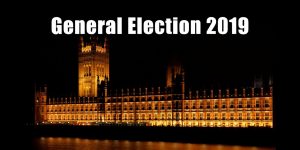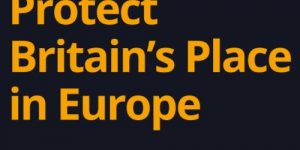The United Kingdom’s Exit from and new Partnership with the European Union White Paper
4. Protecting Our Strong and Historic Ties with Ireland and Maintaining the Common Travel Area
Maintaining our strong and historic ties with Ireland will be an important priority for the UK in the talks ahead. This includes protecting the Common Travel Area (CTA).
4.1 The UK and Ireland are inescapably intertwined through our shared history, culture and geography. It is a unique relationship: there are hundreds of thousands of Irish nationals residing in the UK and of UK nationals residing in Ireland. There are also close ties and family connections, particularly across the border between Northern Ireland and Ireland. Further information is provided in Annex B.
4.2 The relationship between the two countries has never been better or more settled than today, thanks to the strong political commitment from both Governments to deepen and broaden our modern partnership. Two recent State Visits, by Her Majesty The Queen in May 2011 and by President Higgins in April 2014, have helped cement this partnership; no one wants to see a return to the borders of the past. The Prime Minister is committed to maintaining the closest of ties and has already met the Taoiseach several times since taking office, most recently in Dublin in January 2017.
Economic ties
4.3 The UK and Irish economies are deeply integrated, through trade and cross-border investments, as well as through the free flow of goods, utilities, services and people. Annual trade between the UK and Ireland stands at over £43 billion,9] while around 60 per cent of Northern Ireland’s goods exports to the EU are to Ireland.[10],[11] Cross-border movement of people is an important part of this economic integration. Over 14,000 people regularly commute across the border between Northern Ireland and Ireland for work or study.[12]
4.4 We recognise that for the people of Northern Ireland and Ireland, the ability to move freely across the border is an essential part of daily life. When the UK leaves the EU we aim to have as seamless and frictionless a border as possible between Northern Ireland and Ireland, so that we can continue to see the trade and everyday movements we have seen up to now.
4.5 We will work closely to ensure that, as the UK leaves the EU, we find shared solutions to the economic challenges and maximise the economic opportunities for both the UK and Ireland.
Rights
4.6 The close historic, social and cultural ties between the UK and Ireland predate both countries’ membership of the EU and have led to the enjoyment of additional rights beyond those associated with common membership of the EU. The special status afforded to Irish citizens within the UK is rooted in the Ireland Act 1949 and, for the people of Northern Ireland, in the 1998 Belfast Agreement.
4.7 Both the UK and Irish Governments have set out their desire to protect this reciprocal treatment of each other’s nationals once the UK has left the EU. In particular, in recognition of their importance in the Belfast Agreement, the people of Northern Ireland will continue to be able to identify themselves as British or Irish, or both, and to hold citizenship accordingly.
The Common Travel Area (CTA)
The CTA is a special travel zone for the movement of people between the UK, Ireland, the Isle of Man and the Channel Islands. It was formed long before the UK and Ireland were members of the EU and reflects the deep-rooted, historical ties provided for by the free movement of respective members’ nationals within the CTA and the synergies between our countries. We are committed to protecting this arrangement.
The adoption of the CTA was linked to the establishment of the Irish Free State in 1922, with separate legislative provision for the Crown Dependencies in 1919 and 1920. It originally arose as an administrative practice allowing free travel between CTA countries.
It has since been reflected in each state’s application of national immigration policy, with all countries pursuing a common approach. With the exception of a short period during the Second World War there have not been immigration controls on journeys between CTA members.
Protocol 22 of the EU Treaties provides that the UK and Ireland may continue to make arrangements between themselves relating to the movement of people within the CTA.
Nationals of CTA members can travel freely within the CTA to the UK without being subject to routine passport controls.
4.8 We want to protect the ability to move freely between the UK and Ireland, north-south and east-west, recognising the special importance of this to people in their daily lives. We will work with the Northern Ireland Executive, the Irish Government and the Crown Dependencies to deliver a practical solution that allows for the maintenance of the CTA, while protecting the integrity of the UK’s immigration system.
Our commitment
4.9 We are determined that our record of collaboration, built on shared experience and values and supported by personal, political and economic ties, continues to develop and strengthen after we leave the EU.
4.10 We will work with the Irish Government and the Northern Ireland Executive to find a practical solution that recognises the unique economic, social and political context of the land border between Northern Ireland and Ireland. An explicit objective of the UK Government’s work on EU exit is to ensure that full account is taken for the particular circumstances of Northern Ireland. We will seek to safeguard business interests in the exit negotiations. We will maintain close operational collaboration between UK and Irish law enforcement and security agencies and their judicial counterparts.
[9] ‘Geographical breakdown of the current account, The Pink Book: 2016’, ONS, July 2016.
[10] ‘Regional Trade Statistics’, (Third Quarter 2016)’, HM Revenue and Customs, December 2016.
[11] ‘Top Partner Countries and Commodity Infographics (Northern Ireland)’, UK Trade Info, Third Quarter 2016.
[12] ‘Census 2011 Ireland and Northern Ireland (page 63)’, Ireland Central Statistics Office, 2014.
Previous : Strengthening the Union
Next : Controlling Immigration
The United Kingdom’s Exit from and new Partnership with the European Union White Paper

